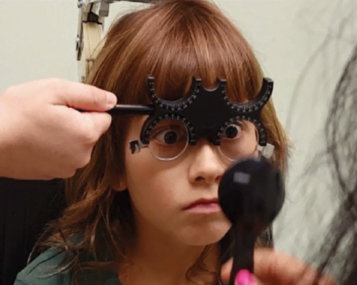 |
|
Compared with general practitioners and pediatricians, optometrists were much more likely to make an accurate pediatric referral, particularly for binocular vision disorders. Photo: Jasleen Jhajj, OD. |
With fewer subspecialists and an increasing population, optimizing timely access to tertiary health care has been a challenge for many healthcare systems. Canada, in particular, is focusing on the lack of training for medical students and residents in ocular care of younger patients, which places a larger burden on the relatively smaller group of pediatric ophthalmologists in the country.
Pediatric diagnosis and treatment is of particular importance, as children may not be able to express concerns about their visual status, let alone know they’re experiencing developmental delays, and may consequently develop vision-threatening conditions and quality of life problems that fly under the radar.
In an effort to pinpoint effective strategies for improving wait times for pediatric ophthalmology, authors of a recent letter to the author published in Optometry and Vision Science evaluated referrals to their tertiary pediatric ophthalmology clinic to assess the diagnostic accuracy of different healthcare providers. They included 1,241 patients 18 and younger; of these, 49.3% were from general practitioners, 25.2% were from pediatricians and 25.2% were from optometrists.
There were no ocular abnormalities in 38% of children referred by either a general practitioner or a pediatrician compared with 15% of children referred by an optometrist. The most common reason for referral was strabismus, with diagnostic accuracy rates of 51%, 50% and 89% among general practitioners, pediatricians and optometrists, respectively.
From these findings, the team highlighted the importance of referring to optometry first to decrease the number of false positives and improve efficiency in pediatric ophthalmology.
“Improving eye care for children requires the collective team effort of all primary care providers such as general practitioners, specialists including pediatricians, optometrists and ophthalmologists as well other stakeholders such as school boards and public health units,” they concluded in their letter. “We hope this letter acts as a stimulus for further dialogue between the interested parties, with the aim of improving eye care for children.”
Voa K, Lee GY, Jindani Y, et al. Letter to the editor: accuracy of referrals to Canadian pediatric ophthalmology services. Optom Vis Sci. October 10, 2022. [Epub ahead of print]. |


